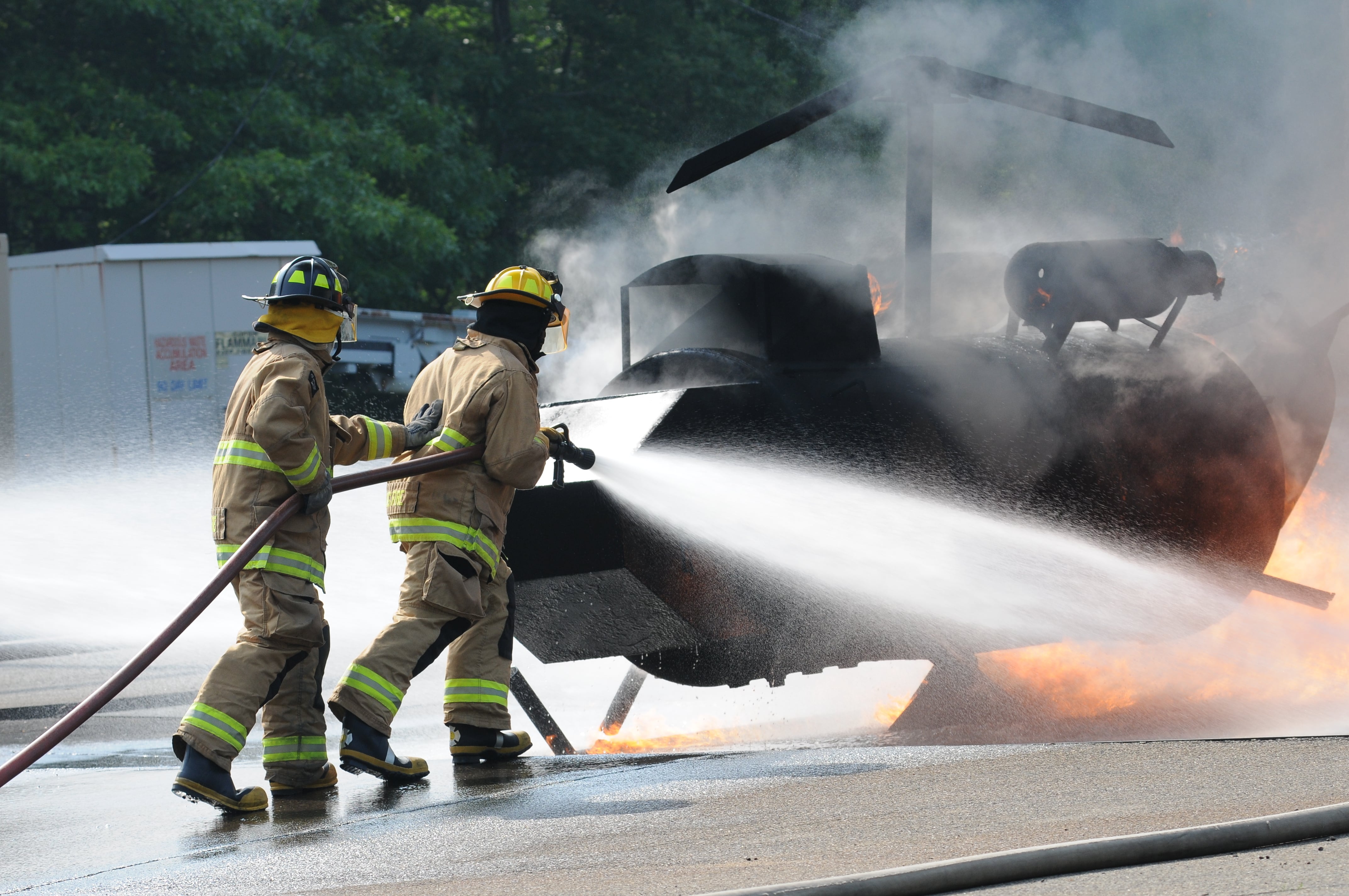This year, under orders from Congress, the Defense Department began testing military firefighters for exposure to chemicals used for fire suppression.
But it is not conducting widespread evaluations or communicating the potential health impact of the hazardous substances to most other troops, family members and former occupants of installations contaminated with per- and polyfluoroalkyl substances, known collectively as PFAS, members of a House Appropriations subcommittee learned Wednesday.
The chemicals have been used since the late 1960s in firefighting foams and many common household items, including non-stick cookware, makeup, food storage containers and stain-resistant fabrics.
But their extensive use by the U.S. military for training and firefighting has contaminated at least 36 on-base drinking water supplies, as well as water and ground contamination in more than 90 communities near installations.
RELATED

Yet families and service members, including some firefighters, aren’t aware of their potential dangers, which include links to certain types of cancer, including testicular and kidney cancers, cardiovascular disease and birth defects, according to Jim Holmes, a retired Army reservist and resident of Satellite Beach, Florida, near Patrick Air Force Base.
“I was flying through Goodfellow Air Force Base [Texas] last week. Talked to a military firefighter instructor about PFAS. He did not know that [aqueous film forming foam] is hazardous. He is currently teaching all the DoD firefighters and he doesn’t know,” Holmes told members of the House Appropriations Military Construction, Veterans Affairs and Related Agencies Subcommittee.
For the past year, Holmes has pressed the Pentagon and Congress to be more open about the contamination and informing families of the potential dangers.
He said he doesn’t want anyone to go through the anguish he experienced last March 29, the date his 17-year-old daughter died of a rare brain cancer.
Holmes said Kaela, who spent most of her childhood on Patrick Air Force Base, and at least 15 others on the base or in the surrounding communities, have received diagnoses of breast or brain cancers. While it may be difficult to pinpoint the cause of an illness like Kaela’s, Patrick is the third most PFAS-contaminated base in the U.S., with groundwater readings of 4.3 million parts per trillion, according to the Environmental Working Group, a D.C.-based advocacy organization.
The Environmental Protection Agency’s maximum health advisory level is 70 parts per trillion.
“Not once in the 16 years we’ve lived in the Patrick Air Force Base/Satellite Beach, were we ever made aware that the ground water was severely contaminated with a hazardous substance called PFAS,” Holmes said. “I will have to live the rest of my life knowing that my decision to serve in the military and reside on a United States Air Force Base resulted in the death of my beautiful daughter."
In his first official act as defense secretary, Mark Esper last July established a task force to study the health effects of PFAS chemicals on humans. The task force is charged with finding a safer firefighting foam and addressing cleanup in affected communities.
Maureen Sullivan, deputy assistant secretary of defense for the environment, told the subcommittee that DoD has launched a $49 million effort to develop a PFAS-free firefighting foam that meets military requirements, stopped using PFAS-containing foam for all but emergencies on land and is working with the Agency for Toxic Substances and Disease Registry to study PFAS exposure.
DoD also has issued a new policy on conducting “periodic testing of DoD-operated drinking water systems” and commanders, as well as military doctors, have been given information to distribute to residents and patients, Sullivan said.
“We have published additional policies on testing drinking water on bases that include requirements for notifying the population on base and archiving that information,” Sullivan said.
But the subcommittee’s chairwoman, Rep. Deborah Wasserman Schultz, D-Fla., pointed out that DoD left it to commanders to determine distribution, which could result in communications breakdown.
“That’s the opposite of consistency. You said you are giving them information and making sure it is being communicated consistently and uniformly, and now you are saying you are letting them make those decisions,” Wasserman Schultz said.
RELATED

Rep. John Carter, R-Texas, pledged to support funding for research and cleanup of contaminated sites.
“You can’t ask a guy or gal to go to war and they come back and find out their family has been poisoned. It doesn’t play well,” he said.
Holmes and Scott Faber, EWG executive director, asked the panel to consider legislation to increase cleanup efforts, broaden medical tests for potentially affected troops, veterans and family members, provide filters for homes in affected installations and communities and institute a registry for affected personnel.
“We must do much more to ensure that people living on bases and near bases have clean water, we must do much more to remediate legacy contamination … and we must do a much better job of notifying current and former service members and their families about the risks they have faced for decades,” Faber said.
Patricia Kime is a senior writer covering military and veterans health care, medicine and personnel issues.




